- Author: Karey Windbiel-Rojas
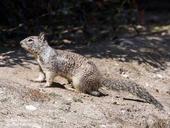
If you are battling with ground squirrels or tree squirrels around your home or property, join us on Thursday, May 19 at noon for UC IPM's one-hour seminar on Squirrels! Dr. Niamh Quinn, UC ANR's Human-Wildlife Interaction Advisor in Orange, Los Angeles, and San Diego counties, will share her insights on squirrel identification, biology, and management. There is still time to register and as always, our monthly webinars are free and open to the public!
https://ucanr.edu/sites/ucipm-community-webinars/
- Author: Beatriz Nobua-Behrmann
- Author: Randall Oliver
- Posted by: Elaine Lander
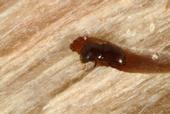
Two identical looking species of wood-boring beetles, collectively known as invasive shothole borers (ISHB), have killed thousands of trees in Southern California and pose an ongoing threat to California's urban and wildland forests. These beetles, which are not native to the United States, were first identified in Los Angeles County in 2012 and have since spread to six other counties: Orange, Riverside, San Bernardino, San Diego, Santa Barbara, and Ventura.
Beetles, Fungus, and Impact
The polyphagous shothole borer (Euwallacea fornicatus) (Figure 1) and the Kuroshio shothole borer (Euwallacea kuroshio) are small ambrosia beetles that have a symbiotic relationship with several species...
- Author: Elaine Lander
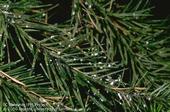
If you're planning to get a holiday tree for your home, you may find unexpected guests have already made their home in your evergreen selection. Common holiday trees such as firs, pines, and spruces can host pests such as aphids, scales, mites, bark beetles, or even praying mantis egg cases. These pests may be present regardless of whether you select your tree from a local tree lot or go to cut your holiday tree at a nearby tree farm or forest. But...
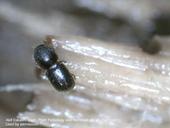
(Credit: A Eskalen)
Small beetles are causing big problems in Southern California. Two closely related species, the polyphagous shot hole borer and the Kuroshio shot hole borer (collectively referred to as invasive shot hole borers), have been attacking more than 60 species of trees. These invasive beetles create a series of tunnels, or galleries, where they lay eggs and cultivate a Fusarium fungus to use as a food source. The fungus causes branch dieback, general tree decline, and can result in tree death. The beetles have been found in Los Angeles, Orange, Riverside, San Bernardino, Ventura, Santa Barbara, and San Diego counties.
What should you look for?
Invasive shot hole...
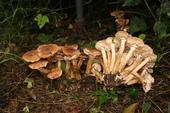
What is Armillaria Root Rot?
Armillaria root rot is a severe fungal disease that affects trees, woody plants, and some herbaceous plants including palms and succulents.
Also known as oak root fungus, Armillaria root rot can rapidly kill trees and presents a challenge to management since infected woody roots can persist for years underground. No plants are completely immune to Armillaria root rot, so prevention is key. Deeply planted trees are often more susceptible to this disease.
The distinctive “honey mushrooms” growing from the base of a tree signals an infection, but they may not always be present. Other visible symptoms include flat cankers on the trunk, wilting, and canopy...


